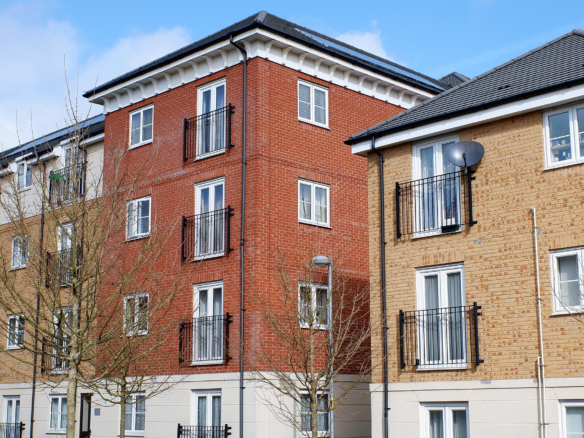The UK housing market is always a topic of keen interest, especially when significant financial changes occur, like the recent cut in interest rates. With the Bank of England’s decision to reduce the base rate, many homeowners, potential buyers, and property investors are left wondering: how will this affect house prices? In this blog post, we’ll explore the nuances of this interest rate cut, examine its potential impact on the housing market, and discuss what it means for different stakeholders.
Understanding the Interest Rate Cut
The Bank of England’s decision to cut interest rates is a move aimed at stimulating economic growth, particularly during times of economic uncertainty or sluggish market activity. By lowering the base rate, the cost of borrowing decreases, which can encourage spending and investment. For homeowners and potential buyers, this means cheaper mortgages, as the rates on variable-rate and new fixed-rate mortgages tend to drop in line with the base rate.
However, while a lower interest rate might seem like a win for borrowers, it’s essential to understand that the broader economic context plays a significant role in determining the actual impact on the housing market.
How Interest Rate Cuts Influence House Prices
Interest rates and house prices share a complex relationship. Typically, when interest rates fall, the cost of borrowing becomes cheaper, leading to an increase in demand for properties. More people are inclined to take out mortgages, which can drive up house prices due to heightened competition.
But there’s more to the story. The current economic environment, characterised by uncertainties, inflationary pressures, and varying consumer confidence levels, adds layers of complexity to this equation. Let’s break down the potential impacts:
- Increased Demand from Buyers
- Lower interest rates can boost affordability for buyers. As mortgage repayments become more manageable, more people may consider entering the property market. This increase in demand could push house prices up, particularly in desirable areas where competition for properties is already fierce.
- Investor Activity
- Property investors often capitalise on low-interest rates to expand their portfolios, especially in times of low returns from other investments like savings accounts. This increased investor activity can lead to higher prices in certain segments of the market, particularly for rental properties.
- Affordability Pressures
- While lower interest rates make borrowing cheaper, they can also exacerbate affordability issues in some areas. If house prices rise sharply due to increased demand, it could price out first-time buyers, particularly in urban areas where prices are already high.
- Regional Variations
- The impact of the interest rate cut may not be uniform across the UK. Regions with stronger economic growth, better job prospects, and high demand for housing could see more significant price increases. In contrast, areas with weaker economic fundamentals might not experience as much price pressure, despite the lower interest rates.
Potential Risks and Uncertainties
Despite the potential for house price increases, it’s crucial to acknowledge the risks and uncertainties that accompany this interest rate cut.
- Inflationary Pressures
- The UK is currently grappling with inflation, which affects everything from household budgets to business costs. If inflation continues to rise, it could erode the affordability benefits of lower interest rates, particularly if wage growth doesn’t keep pace with price increases.
- Economic Uncertainty
- The broader economic outlook remains uncertain, with potential risks from global economic challenges, Brexit-related issues, and domestic political instability. These factors can dampen consumer confidence and may lead some potential buyers to hold off on purchasing property, which could, in turn, limit price growth.
- Future Interest Rate Increases
- While interest rates have been cut now, the Bank of England could raise them in the future if inflation becomes a more significant concern. This would increase borrowing costs, potentially cooling down the housing market and leading to a slowdown in price growth or even a decline in prices.
What Does This Mean for Homebuyers and Investors?
For homebuyers, particularly first-time buyers, the current interest rate cut presents both opportunities and challenges. On one hand, lower mortgage rates make homeownership more affordable in terms of monthly repayments. On the other hand, the potential for rising house prices could mean that buyers need to act quickly to secure a property before prices climb further.
Property investors may find the current environment favourable for expanding their portfolios, especially if they can secure low mortgage rates and anticipate rental income growth. However, they must also consider the risks associated with future rate increases and the potential for market volatility.

Keep A Watchful Eye on the Market
The recent UK interest rate cut is likely to have a significant impact on the housing market, with potential for both positive and negative outcomes. While lower borrowing costs can increase demand and push up house prices, the broader economic context, including inflation and future interest rate decisions, will play a crucial role in determining the market’s direction.
For those considering entering the market, whether as a buyer or an investor, it’s essential to stay informed and be prepared to act quickly. The current environment offers opportunities, but also requires careful consideration of the risks involved.
Keeping an eye on economic developments, market trends, and advice from financial experts can help navigate this complex landscape. Ultimately, whether this interest rate cut will lead to sustained house price growth or merely a temporary spike remains to be seen.
By remaining vigilant and responsive to changes, buyers and investors alike can make informed decisions that align with their financial goals in this evolving market.
A Closer Look at Regional Differences
When discussing the impact of interest rate cuts on house prices, it’s crucial to consider the regional variations across the UK. The housing market isn’t a monolith; it varies significantly from one region to another, influenced by factors such as local economic conditions, employment opportunities, and demand for housing.
London and the South East
In London and the South East, where property prices are already high, the effect of lower interest rates might be more pronounced. These areas tend to attract a large number of buyers and investors, both domestic and international, who are often looking for long-term investment opportunities. The reduction in borrowing costs could lead to even more competition for properties, potentially driving prices higher. However, with the cost of living already stretched in these regions, there’s also a risk that affordability issues could intensify, particularly for first-time buyers.
The North of England
In contrast, regions in the North of England might experience a different impact. While house prices in cities like Manchester, Liverpool, and Leeds have been rising steadily, they still remain more affordable compared to the South. The interest rate cut could make these areas even more attractive to both first-time buyers and investors, leading to a potential increase in prices. However, the pace of growth may be more moderate compared to London and the South East, as these areas are still catching up in terms of economic growth and demand.
Scotland and Wales
Scotland and Wales have seen increasing interest from buyers in recent years, partly due to their relatively affordable property prices and attractive living conditions. The interest rate cut could further boost demand in these regions, particularly among those looking for second homes or relocating for a better quality of life. However, the extent of the price increases might be tempered by local economic factors and the availability of housing stock.
The Role of Government Policies
Government policies and initiatives play a pivotal role in shaping the housing market, especially in the context of interest rate changes. Recent years have seen various government interventions aimed at supporting homeownership and managing the housing supply, such as the Help to Buy scheme and Stamp Duty holidays.
With the interest rate cut, it’s possible that the government might introduce additional measures to either stimulate or cool down the housing market, depending on how prices react. For instance, if house prices rise too quickly, the government might consider policies to increase housing supply or provide targeted support to first-time buyers to ensure affordability remains within reach for a broader segment of the population.

What Should Buyers and Investors Consider?
For those looking to buy property in the near future, the current environment presents a unique set of challenges and opportunities. Here are some key considerations:
- Timing the Purchase
- With interest rates low, it might be tempting to rush into the market before prices rise further. However, it’s important to ensure that any purchase aligns with long-term financial goals rather than just reacting to short-term market conditions.
- Locking in Mortgage Rates
- Buyers should consider locking in a favourable mortgage rate while they are still low. Fixed-rate mortgages can provide stability and predictability in repayments, especially if there is a possibility of interest rates increasing in the future.
- Exploring Different Regions
- Depending on budget and lifestyle preferences, exploring different regions could offer better value for money. Areas with strong growth potential and good amenities might provide more affordable options compared to the more saturated markets in London and the South East.
- Risk Management
- Investors, in particular, should be mindful of the risks associated with potential future interest rate hikes. While the current environment may be favourable for property investment, it’s important to have a strategy in place to manage potential fluctuations in mortgage rates and property values.
Long-Term Outlook: A Balancing Act
The long-term outlook for the UK housing market following the interest rate cut is one of cautious optimism, tempered by the realities of economic uncertainty. While lower interest rates are likely to boost demand and potentially drive up prices, the broader economic environment will continue to influence market dynamics.
Inflation remains a key concern, as rising costs could offset some of the benefits of lower interest rates, particularly if wages do not keep pace. Moreover, the potential for future interest rate increases means that buyers and investors need to be prepared for a range of scenarios.
For now, the best approach for anyone involved in the housing market—whether buying, selling, or investing—is to stay informed, consider all the variables at play, and make decisions based on both current conditions and long-term goals.
Final Thoughts: Navigating the Uncertainty
The recent cut in UK interest rates has undoubtedly added a new layer of complexity to the housing market. While there are clear benefits for borrowers, particularly in the form of cheaper mortgages, the potential for rising house prices and economic uncertainties requires a balanced and well-considered approach.
For homeowners, first-time buyers, and investors alike, the key lies in staying agile and responsive to changes in the market. By keeping a close eye on economic indicators, government policies, and regional trends, individuals can make informed decisions that align with their financial objectives.
Ultimately, while the interest rate cut may offer opportunities, it’s essential to navigate the uncertainty with a clear strategy and a focus on long-term sustainability.




